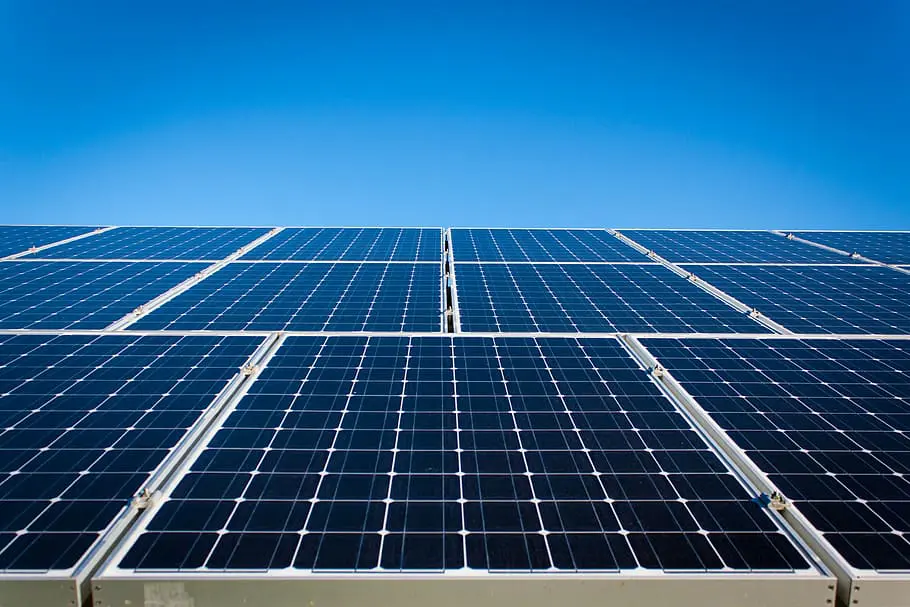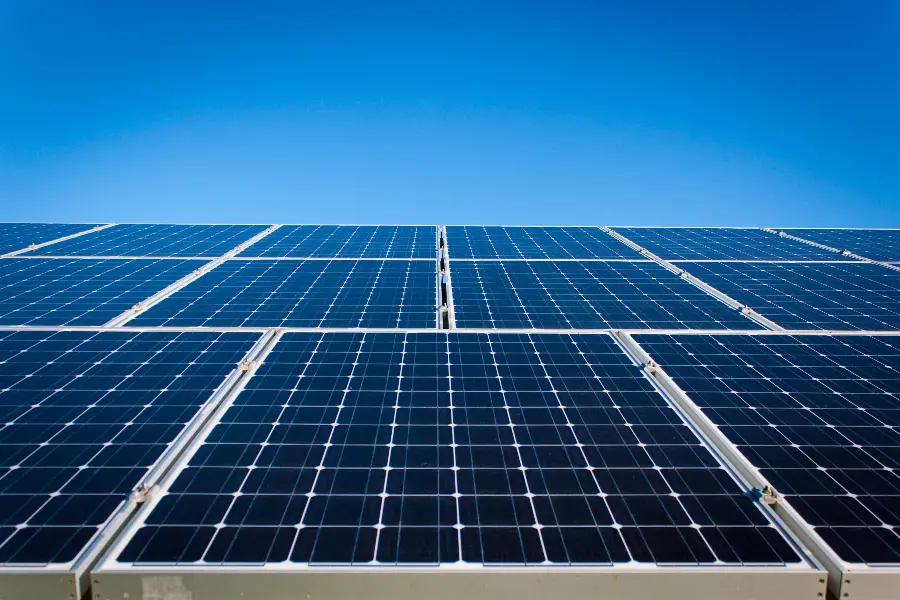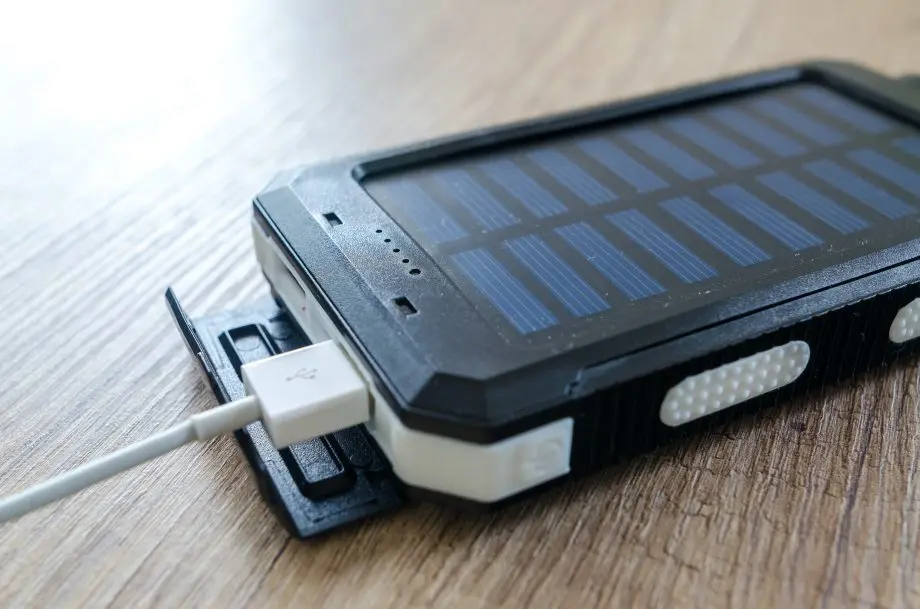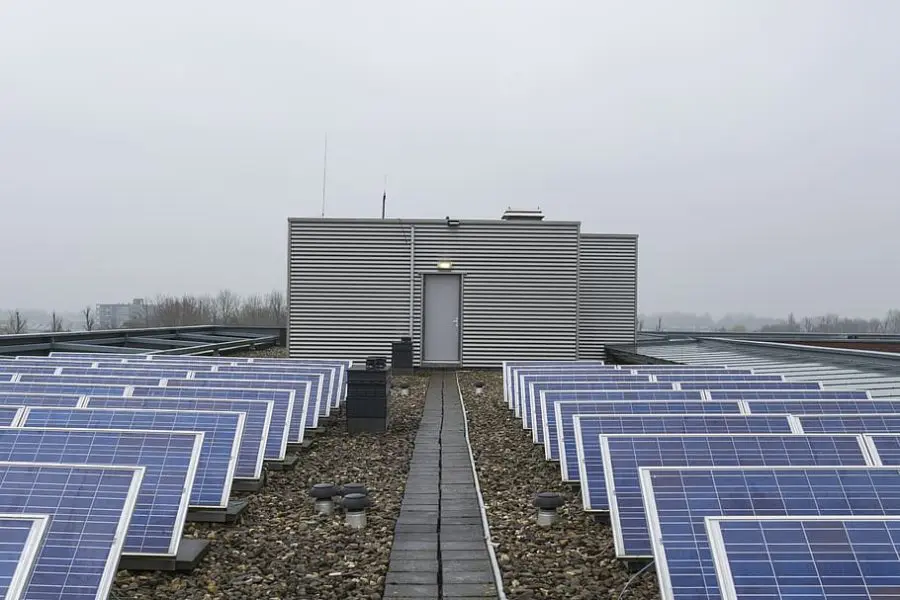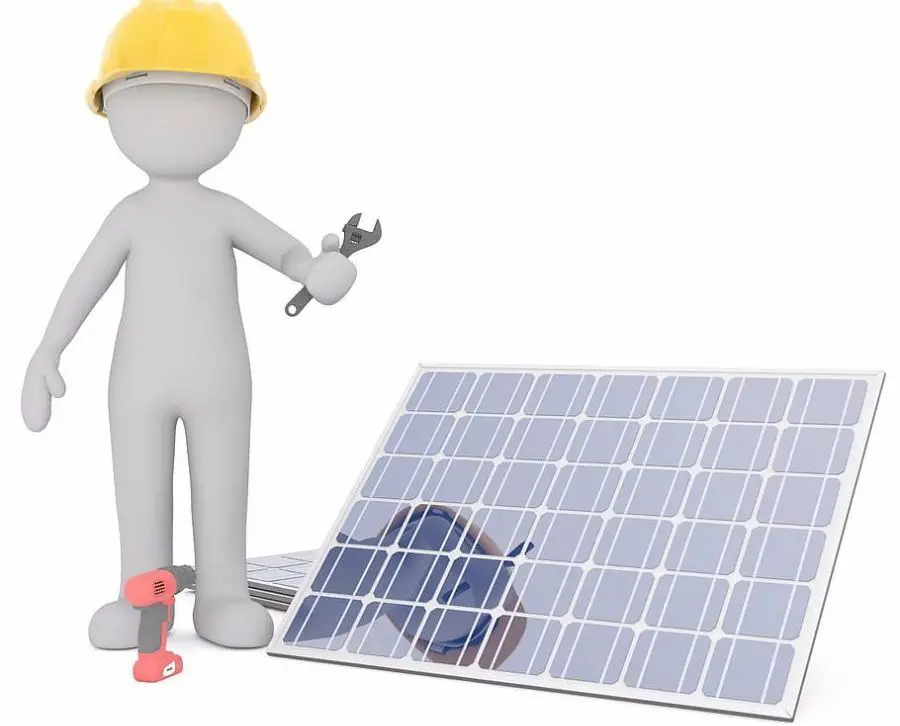
Discover the perks of harnessing solar energy for home and business! Dive into our detailed guide for cost-effective, green power solutions. Join the solar revolution!
Welcome to the world of sustainable power solutions! As you explore the realm of renewable energy, you’ve likely heard a lot about solar energy for home and business.
It’s more than just a trend. It’s a revolution, transforming how we generate and consume electricity.
This comprehensive guide unravels the mysteries of solar energy, unveiling its endless benefits, from slashing your utility bills to reducing your carbon footprint.
So, whether you’re a homeowner looking for a smart investment, or a business owner aiming for sustainability, sit back, relax, and let’s embark on this sunny journey together!
Solar Energy for Home and Business

Welcome, energy enthusiasts! We’re thrilled to have you here as we dive into the dynamic world of Solar Energy for Home and Business.
This post is packed with insightful information covering the nitty-gritty of solar energy benefits, the environmental impact, cost-effectiveness, and various types of solar power systems.
We’ll even guide you through the installation process, how to choose a reliable contractor and exciting DIY solar projects you can try.
As if that wasn’t enough, we’ve also thrown in some case studies, future trends, and a look at solar incentives too.
So, buckle up and prepare to illuminate your knowledge of this sustainable energy source. It’s high time to let the sun shine on your energy bills!
The Importance of Exploring Renewable Energy Options
As we move forward, it’s clear that our old habits of energy consumption need a bit of a shakeup, don’t you think?
You see, renewable energy options, like solar, wind, and hydropower, are not just buzzwords we throw around for fun.
They are legitimate, sustainable, and, frankly, necessary alternatives to the conventional, non-renewable sources we’ve relied on for far too long.
The beauty of renewable energy lies in its ability to be replenished naturally over a short period.
Solar energy, our star player, is not just unlimited but is also free. Yes, you read that right, free!
Once you have your solar energy system up and running, the sunlight doesn’t cost a dime.
And there’s plenty to go around, more than enough to power the entire globe, in fact!
But it’s not just about cost. Shifting to renewable energy means we’re reducing our dependency on fossil fuels, which are not only limited but also harmful to the environment.
By opting for renewable sources, we’re taking a significant step toward curbing harmful emissions and combating climate change.
Now, isn’t that a goal worth aiming for?
The Focus of the Article: Solar Energy for Homes and Businesses
Right, now that we’ve set the stage, let’s dive into the crux of our discussion, Solar Energy for Homes and Businesses.
Picture this: You’re sitting comfortably in your solar-powered RV, home or business, the electricity meter is barely twitching, and you’re doing your bit for the environment.
Sounds pretty good, right? Well, through this article, we’ll help you turn that vision into reality.
We’ll take you on a tour through the solar universe, exploring its numerous benefits, understanding how it plays a key role in sustainable living, and, of course, the cost-effectiveness of it all.
You might be wondering, But what about the technical stuff? The types of solar power systems, storage, and installation process?
We’ve got you covered! From DIY solar projects for those hands-on folks to guides on choosing the right contractor, we’ve included all the details you’ll need.
And, if you’re a business owner or involved in the educational sector, we’ve got a detailed guide and case studies for you too.
Plus, we’ll look at grants and incentives, because who doesn’t love a little extra savings?
As we journey through the solar energy landscape together, you’ll see that the future of energy is not just bright—it’s positively radiant!
Let’s get started with one of the most exciting parts of our solar energy journey, exploring the benefits of solar power for homes.
You see, going solar is like being part of an exclusive club. The membership comes with some fantastic perks that not only positively impact your wallet but also the world around you.
Intriguing, isn’t it? Well, you’re about to discover how this incredible energy source can transform your home into a self-sufficient powerhouse (literally!) and play a pivotal role in protecting our beautiful planet.
So, get ready to have your mind illuminated with the numerous advantages of inviting the sun into your home, and let’s dive right into the sunny side of life!
Savings on Electricity Bills
Let’s chat about one of the most enticing reasons to go solar the savings on those pesky electricity bills.
You know the feeling, the dread that comes with opening that envelope or email at the end of the month.
Well, imagine significantly reducing, or even completely eliminating that expense. It sounds like a dream, doesn’t it?
Here’s how it works. Once you install solar panels, your home starts to generate its own electricity.
This means during the sunny hours, instead of drawing energy from the grid, you’re drawing from your personal, sunshine-fueled power station.
For many, this can lead to drastic reductions in monthly electricity bills.
In some places, you might even be able to sell any excess energy back to the grid, turning your home into a mini profit center! Now, that’s a sunny proposition, isn’t it?
Increasing Property Value
Now, let’s move on to another fantastic perk of going solar the potential increase in your property value. Who knew being eco-conscious could also be a solid investment, right?
Studies have shown that homes with solar energy systems often sell for more than their non-solar counterparts. Why is that?
Well, for one, a solar-equipped house provides future owners with the benefits of lower energy costs.
It’s like gifting them a lifetime of reduced electricity bills. Quite an attractive package, wouldn’t you say?
Plus, as more and more people become environmentally conscious, a home with a clean, renewable energy system is likely to be high on a potential buyer’s list.
It’s a clear signal that the house is not just a place to live but a testament to sustainable living.
In the real estate market, that’s becoming a major selling point.
So, installing solar panels could be a win-win both helping you save now on electricity bills and possibly making you money down the line if you ever decide to sell. Talk about a bright investment!
How Does Solar Power Help the Environment?
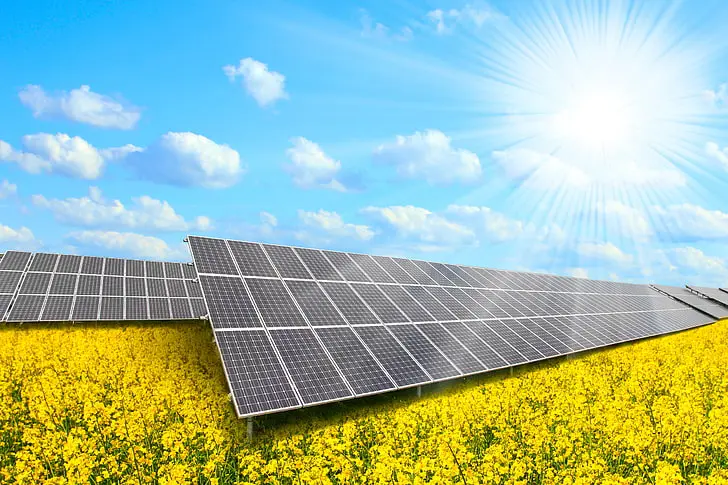
Alright, we’ve talked about the personal benefits of going solar, but what about the bigger picture? How does solar power help the environment?
Let’s take a moment to appreciate how solar power positively impacts our precious environment.
You see, the sun doesn’t just brighten our day, it’s also a superstar when it comes to providing clean, green energy.
By embracing solar power, we’re taking steps towards a healthier planet.
And the best part? It’s a move that doesn’t just benefit us, but generations to come.
So, let’s delve into the environmental wonders that solar power brings to the table, and uncover the ‘green’ side of solar energy.
After all, we’re all part of this Earth family, aren’t we?
Reduction of Carbon Emissions
Okay, let’s start with one of the most crucial aspects, how solar power helps in reducing carbon emissions.
The thing is traditional energy sources like coal, oil, and natural gas, while they’ve served us well over the centuries, come with a hefty environmental price.
When we burn these fossil fuels for electricity, it releases greenhouse gases, primarily carbon dioxide (CO2), into our atmosphere.
These gases act like a blanket around the Earth, trapping heat and leading to what we know as global warming and climate change.
Not exactly the kind of change we’re rooting for, right?
Now, enter solar power. Solar panels produce electricity by converting sunlight, and guess what?
This process releases virtually zero greenhouse gases. It’s a clean, green method of producing power.
So, by switching to solar, we’re directly reducing the amount of CO2 emissions and helping to slow down global warming.
And that’s a pretty fantastic reason to go solar if you ask me!
Conservation of Water Resources
And it doesn’t stop at carbon emissions. Did you know that generating power traditionally is a water-intensive process?
That’s right. Water is used in large quantities for cooling in power plants, extraction processes, and even in refining and transporting fossil fuels.
And with clean, fresh water becoming a scarce resource, that’s a serious concern.
Now, here’s the amazing thing about solar power, it requires no water to generate electricity. Zero, zilch, nada!
The only time water comes into the picture is when we might need a little to clean the solar panels, and that’s minimal.
So, by switching to solar energy, we’re not only saving on carbon emissions, but we’re also conserving one of our planet’s most precious resources, water. ,
It’s safe to say that the sun is truly shining on our environmental efforts, wouldn’t you agree?
Solar Power and Its Role in Sustainable Living

Are you ready to talk about sustainable living? Because it’s about to get real, and really interesting!
Let’s focus our attention on how solar power slots beautifully into the jigsaw puzzle of sustainability.
You see, choosing solar power is like choosing the main character in the story of sustainable living.
It’s an effortless yet impactful way to reduce our carbon footprint, conserve resources, and live in harmony with our surroundings.
If you’ve been looking for a way to live more sustainably, or simply want to know how solar power contributes to this lifestyle, you’re in the right place.
So, get comfy, and let’s dive into the wonderful synergy between solar power and sustainable living.
After all, the future’s not just about living, it’s about living sustainably!
Creating Energy Self-Sufficiency
Isn’t the idea of being self-sufficient just a bit thrilling? Well, that’s what solar power can bring to your life, energy self-sufficiency.
Imagine not having to rely entirely on your energy provider for electricity.
You’d be generating your own power right from the comfort of your home.
With a solar power system in place, your home essentially becomes its own mini power station.
That’s independence right there, my friends! Plus, it provides a sense of security.
In case of power outages or issues with the main grid, you’ve got a reliable backup.
You’ve harnessed the power of the sun, and that’s a power that doesn’t fade.
So, say hello to a future of energy independence, and let the sunshine in!
Reduction of Energy Consumption from the Grid
Now, let’s discuss another essential aspect of sustainable living, the reduction of energy consumption from the grid.
Traditional power grids mostly rely on fossil fuels, and we’ve already chatted about the environmental impact of those.
So, when you install solar panels, you start producing your own electricity.
This means you’re drawing less power from the grid, thus reducing your reliance on non-renewable energy sources.
The bonus is, during peak sun hours, you might even generate more power than you use.
In many regions, this surplus energy can be fed back into the grid, supplying clean, green energy to your community.
By reducing energy consumption from the grid, we’re not just lowering our personal carbon footprint.
We’re also driving the demand for renewable energy and encouraging a larger shift towards sustainable energy sources.
And that, my friends, is how you become a part of the bigger solution. Feels good, doesn’t it?
The Cost-Effectiveness of Solar Power Systems
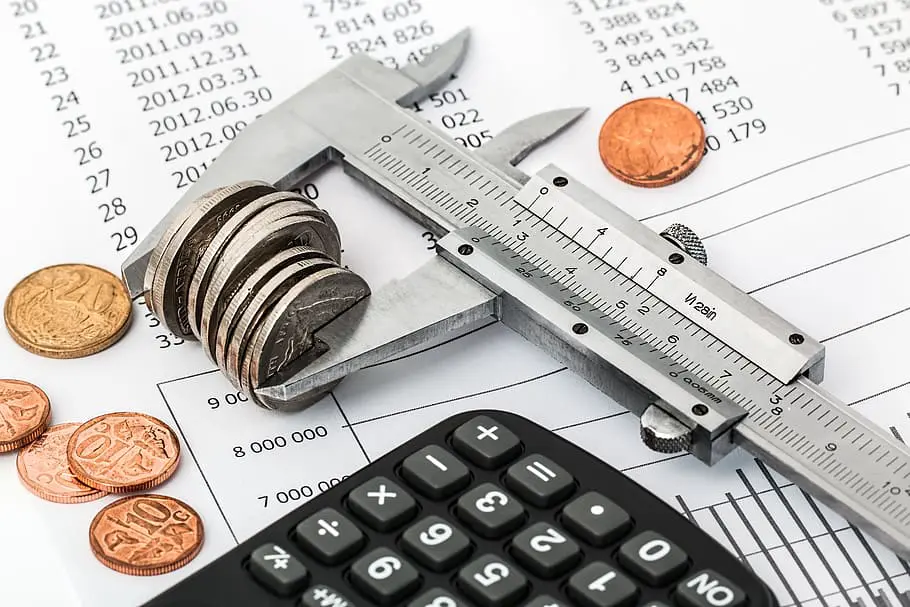
Let’s talk money, shall we? Don’t worry, it’s all good news here in the world of solar power.
The switch to solar is not only great for the environment and sustainability. It’s also a smart move for your wallet.
While the initial investment may seem substantial, you’ll find that the cost-effectiveness of solar power systems truly shines in the long run.
Curious about how this works? Excellent! Let’s dive deeper into the economic side of solar power.
You’ll soon discover why going solar is not just an eco-friendly choice but also a financially savvy one.
Get ready to watch your savings rise as the sun does!
Long-Term Cost Savings
First things first, let’s chat about long-term cost savings. Now, it’s true that the initial cost of installing a solar power system can feel a bit steep.
But here’s the exciting part. Once your system is up and running, the cost benefits start to roll in.
Remember, sunlight is free! So, once you’ve covered the initial setup costs, the electricity your solar panels generate comes at zero cost.
This means the monthly savings on your electricity bill can quickly start to offset the initial investment.
Over the lifetime of your solar power system, which can be 25 years or more, the savings can add up to a substantial amount.
And then there’s maintenance. Solar power systems require relatively little upkeep, meaning there are minimal costs post-installation.
It’s like a gift that keeps on giving!
Protecting Against Rising Energy Costs
Now, let’s tackle another monetary benefit of going solar—protection against rising energy costs.
We all know the feeling of opening an energy bill and being surprised at how high the cost has jumped.
With solar power, you’re reducing the amount of energy you need to buy from the grid, so you’re less impacted by these price hikes.
Even better, the energy your system generates is not subject to fluctuations in the energy market.
The sun, thank goodness, doesn’t change its rates! This stability can make budgeting your energy costs much easier and less stressful.
So, by investing in a solar power system, you’re essentially locking in a lower, more predictable energy cost for many years to come.
Now, that’s a financially sunny forecast, isn’t it?
Different Types of Solar Power Systems
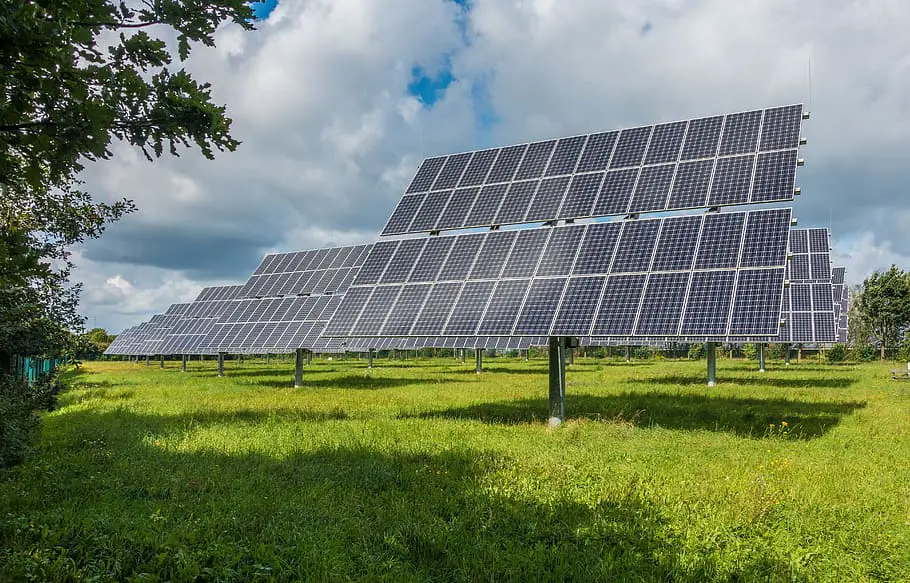
Okay, time to roll up our sleeves and dive into the fascinating world of solar power systems.
You see, the solar industry has evolved immensely over the years, offering different types of solar power systems to suit varying needs and circumstances.
Whether you live in a suburban house, a city apartment, or run a farm in the countryside, there’s a solar power solution for you.
So, let’s explore this array of solar options together. You might just be surprised at how diverse and flexible solar power can be.
Here’s to finding the perfect solar match for your home or business!
Photovoltaic (PV) Systems
Let’s start our exploration with the most common type of solar power system you’ll see around, the Photovoltaic (PV) system.
Now, that’s quite a mouthful, but the concept is quite simple.
These systems convert sunlight directly into electricity using something called photovoltaic cells, which are the shiny panels you see on rooftops.
The beauty of PV systems is in their flexibility. They can be installed on almost any scale.
From a few panels on your home roof to cover part of your energy consumption, to large ground-mounted systems for businesses or solar farms, PV systems are incredibly versatile.
They can even be integrated into building materials, like solar windows or solar roof tiles, how cool is that?
So, if you’re looking for a flexible, scalable solar solution that can work anywhere the sun shines, PV systems could be your sunny best friend.
Concentrated Solar Power (CSP) Systems
Now, let’s turn our attention to a less commonly used, but equally exciting type of solar power, the Concentrated Solar Power (CSP) system.
CSP systems work a bit differently. Instead of converting sunlight directly into electricity, they focus or ‘concentrate’ sunlight to heat a fluid, which then generates steam to power a turbine and produce electricity.
CSP systems are typically used on a larger scale, like in solar power plants, where large mirrors are used to focus sunlight onto a single point.
While they might not be the go-to choice for your average homeowner due to their size and complexity, CSP systems play a vital role in our renewable energy landscape.
They are especially effective in areas with high direct sunlight (think deserts) and can include thermal energy storage, allowing them to produce electricity even when the sun isn’t shining. Now, that’s some sunny innovation, right?
In short, whether it’s the versatile PV system or the large-scale CSP, there’s a solar power system for almost every need.
And that’s the beauty of solar energy, it’s as diverse as it is powerful.
Understanding Solar Power Battery Storage
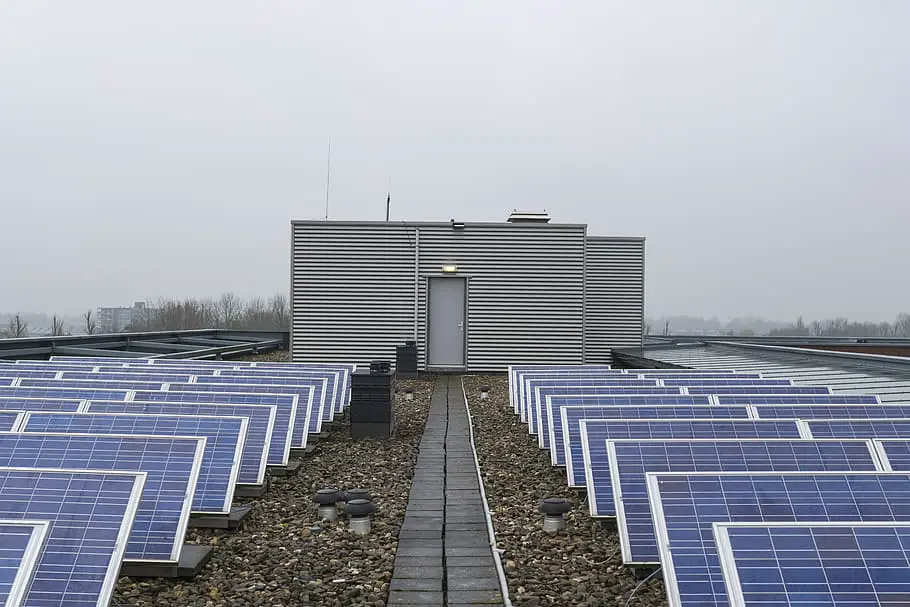
And now, let’s shine some light on an essential component that takes solar power systems to the next level, battery storage.
Think of it as your solar power’s best buddy, capturing and holding on to the sun’s energy so you can use it whenever you need, even when the sun has set.
Solar power battery storage is a game-changer, turning solar power into a truly around-the-clock energy solution.
So, if you’re ready to learn about how you can store sunshine in a box and use it on demand, let’s get started.
It’s time to unlock the full potential of your solar power system with the magic of battery storage!
The Role of Battery Storage in Energy Usage

Solar energy is fantastic, but here’s a little hiccup. The sun isn’t always shining.
So, what happens to your solar power system when it’s cloudy, or when the sun goes down?
Well, that’s where solar power battery storage comes into play.
Battery storage systems capture and store the excess energy your solar panels generate during the day.
This stored energy is then available for you to use when your panels aren’t generating electricity, like at night, on cloudy days, or during power outages.
It’s like having a solar-powered flashlight that you can switch on whenever you need.
This not only extends your access to solar power beyond daylight hours but also helps smooth out the supply, making your home energy usage more resilient and efficient.
It’s all about harnessing the sun’s power to its fullest potential, and battery storage is a key player in making that happen.
Different Types of Solar Batteries
Now, let’s talk about the actual batteries. Solar batteries come in different shapes and sizes, with varying capacities and technologies.
Some of the most common types include lead-acid batteries and lithium-ion batteries.
Lead-acid batteries have been around for a long time and are often cheaper upfront.
However, they typically have a shorter lifespan and lower efficiency compared to other types.
On the other hand, lithium-ion batteries are becoming increasingly popular for solar storage.
They’re more efficient, have a longer lifespan, and can store more energy for their size. However, they’re generally more expensive upfront.
Choosing the right battery for your solar power system depends on several factors, including your energy needs, budget, and local regulations.
But no matter what type of battery you go for, the bottom line is that including storage in your solar power system can take your renewable energy experience to the next level.
So, let’s give a sunny salute to the power of stored energy!
Steps to Install Solar Panels at Home
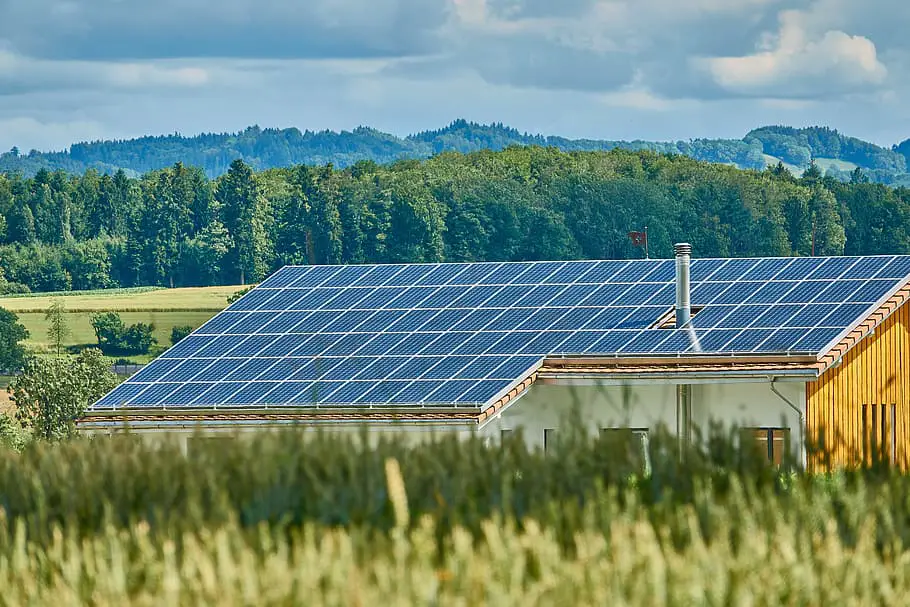
Are you ready to invite the sun into your home? That’s fantastic! Embracing solar power is a significant step towards a greener, more sustainable lifestyle.
But, you might be wondering, how does one actually go about installing solar panels at home?
Well, that’s precisely what we’re going to explore now. From planning to installation, it’s a journey that’s much simpler than you might imagine.
So, let’s get you started on the road to solar power. There’s a bright, sunny adventure waiting for you, and we’re here to guide you every step of the way!
Initial Assessment and Planning
Let’s start at the beginning, shall we? Before any solar panels grace your rooftop, there’s a crucial first step the initial assessment and planning.
This stage is all about understanding your specific needs, conditions, and goals for your solar power system.
A professional solar installer will typically begin by evaluating your home’s solar potential.
They’ll look at things like your roof’s orientation and angle, any potential shading issues, and the local climate.
They’ll also review your energy usage patterns to determine the size and type of solar system that would best meet your needs.
Then comes planning. This includes designing the layout of your solar panels for maximum sunlight exposure and efficiency, choosing the right type of solar power system and battery storage, and planning the system’s integration into your home’s existing electrical system.
Remember, each home is unique, and a solar power system should be custom-tailored to fit your home and lifestyle.
So, this initial assessment and planning stage is critical in ensuring you get the most out of your solar investment.
Installation and Grid Connection
Once the planning is complete, it’s time for the exciting part, installation!
Your solar installer will secure the solar panels to your roof or chosen location, connect them to an inverter (which converts the solar-generated direct current electricity into alternating current that your home uses), and integrate the system with your home’s electrical panel.
Next comes the connection to the electricity grid. Why the grid?
Well, even with a solar power system, your home will still be connected to the traditional power grid.
This allows you to draw power when your system isn’t producing enough (like at night or during very cloudy days), or feed excess power back into the grid if your system produces more than you need.
Once your system is installed and connected, it’ll be inspected and tested to ensure everything is working properly.
And then, voila! You’re ready to start harnessing the power of the sun.
It’s a process that might seem complex at first glance, but with a team of professionals guiding you, it’s a smooth and rewarding journey.
Now, let’s bask in the glow of your new solar-powered home!
How to Maintain and Clean Solar Panels
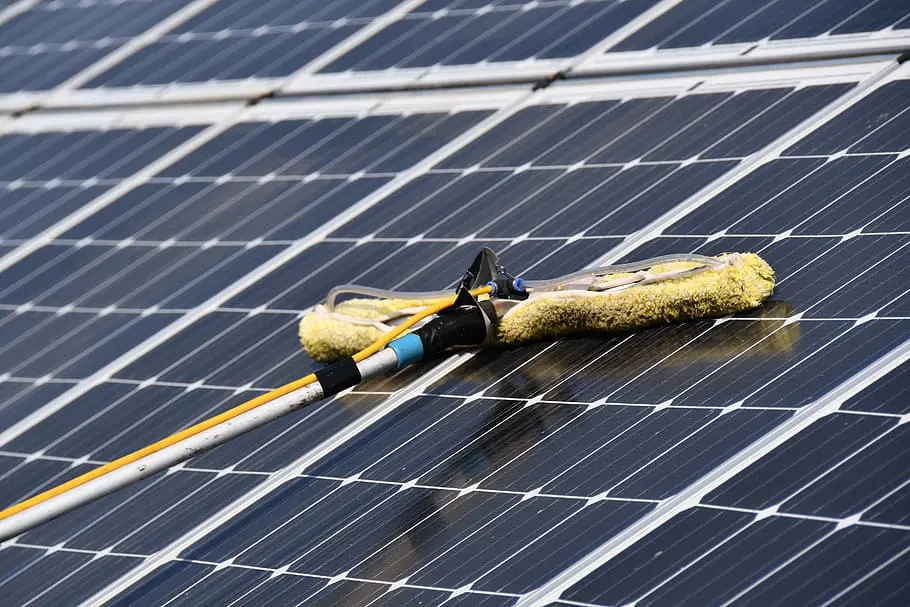
Congratulations! You’ve embraced solar energy and now have a shiny new system installed.
But like all good things in life, solar panels need a bit of TLC to keep performing at their best.
It’s like having a pet only your solar panels don’t fetch balls or purr, they quietly soak up the sun and turn it into electricity.
But how exactly do you care for your sunny new companions? Don’t worry, it’s easier than you might think.
From regular cleaning to a little routine check-up, let’s navigate through the simple steps of maintaining and cleaning your solar panels.
After all, a little care goes a long way in keeping your panels sun-happy!
Routine Cleaning Guidelines
Alright, first things first: keeping your solar panels clean. Solar panels are a bit like the windows of your house.
Over time, they can get dusty or dirty, which can reduce their ability to absorb sunlight effectively.
So, regular cleaning is key to ensure your panels are soaking up as much sunshine as they can.
But, here’s the good news: cleaning solar panels is typically a straightforward process.
In most cases, a simple rinse with a garden hose can do the trick.
For those stubborn bird droppings or more severe grime, a soft brush with a long handle or a squeegee with a plastic blade on a long pole can be used along with mild soap and water.
However, it’s important to remember safety first! Always follow the manufacturer’s cleaning instructions.
If your panels are high up or difficult to access, it might be safer to hire a professional cleaner. As they say, clean panels are happy panels!
Monitoring and Maintaining for Optimal Efficiency
In addition to keeping your panels clean, regular monitoring and maintenance are vital to ensure they continue to operate efficiently.
This includes checking for any visual defects, such as cracks or discoloration, and monitoring your system’s energy output to make sure it’s performing as expected.
Most modern solar power systems come with monitoring software that allows you to track your system’s performance in real time.
This can help you spot any potential issues early on. If you notice a significant drop in energy output or any other abnormalities, it might be time to call in a professional to inspect your system.
Regular professional maintenance checks can also be beneficial to detect and address any potential issues before they become significant problems.
These inspections might include checking the mounting system, inspecting the inverter and other electrical components, and assessing the overall system’s health.
In a nutshell, taking care of your solar panels involves regular cleaning, monitoring your system’s performance, and scheduling professional maintenance checks.
By doing so, you’ll ensure your solar panels stay efficient, effective, and ready to soak up the sun day after day. Now, that’s what we call solar panel care 101!
How to Choose the Right Solar Power Contractor

So, you’re all fired up and ready to join the solar energy revolution and that’s awesome!
But before your roof becomes the sun’s best friend, there’s an important decision to make: choosing the right solar power contractor.
It’s like finding the perfect dance partner for your solar-powered waltz. But how do you find a contractor that strikes the right chord?
Well, that’s exactly what we’ll uncover in this section. From understanding their expertise to checking their credentials, we’ll guide you through the key considerations.
Because choosing the right solar power contractor can make your journey to solar energy as bright and smooth as a sunny day!
Checking Qualifications and Reviews
The first step in choosing the right solar power contractor is to look at their qualifications.
Just like you wouldn’t choose a dentist to fix your car, you want to make sure your solar contractor has the right expertise and credentials for the job.
Certifications from recognized industry bodies, such as the North American Board of Certified Energy Practitioners (NABCEP), can indicate a high level of professionalism and competence.
Also, check whether the contractor is licensed and insured to perform solar installations in your area.
But qualifications are just part of the story. You also want to hear about real-life experiences from their past customers.
Online reviews and ratings can provide valuable insights into a contractor’s reliability, quality of work, customer service, and after-installation support.
Don’t hesitate to ask the contractor for references, too.
In a nutshell, a great solar contractor should combine the right qualifications with positive reviews.
It’s all about finding a contractor who not only knows their stuff but also earns high marks from their customers.
Comparing Quotes
Once you’ve shortlisted contractors based on their qualifications and reviews, it’s time to talk money.
Ask each contractor for a quote for your solar power system installation.
But remember, choosing a solar power contractor isn’t like hunting for a bargain at a yard sale. The lowest quote isn’t necessarily the best.
Each quote should detail the cost of the equipment, installation, any necessary structural work, permits, warranty, and after-service maintenance.
Make sure you understand what’s included and what’s not.
Comparing quotes can help you understand the value you’re getting for your money.
It’s not just about the upfront cost, but also about the quality of the products, the service you’ll receive, and the potential savings your system will generate over time.
Choosing the right solar power contractor is a critical step in your solar energy journey.
By checking qualifications and reviews and comparing quotes, you’ll be well-equipped to make an informed decision.
Here’s to finding your perfect solar power partner!
DIY Solar Power Projects for Beginners

Are you a hands-on type of person? Do you love rolling up your sleeves and diving into exciting new projects?
If so, the world of DIY solar power projects is going to spark some serious joy for you!
Embarking on a DIY solar project can be a fun and rewarding way to dip your toes into the sunny waters of solar energy.
And don’t worry, you don’t need to be a seasoned engineer or a solar guru to get started.
From building a simple solar-powered phone charger to setting up a small solar panel system, we’ll explore a variety of beginner-friendly projects.
Ready to harness the power of the sun with your own hands? Let’s get crafting!
Building a Solar Phone Charger
There’s something incredibly satisfying about creating a gadget with your own two hands, isn’t there?
Especially when it’s a gadget that harnesses the power of the sun to charge your phone.
Imagine powering up your device just by basking in the sun’s rays, pretty cool, right?
Building a solar phone charger is a beginner-friendly project that’s a great way to dive into DIY solar.
You’ll need a few basic materials: a small solar panel, a USB power bank, some wires, and a bit of soldering know-how.
You’ll start by connecting the solar panel to the power bank, essentially creating a portable charger that absorbs sunlight and converts it into energy to power your devices.
Don’t worry if you’ve never soldered before, there are plenty of online tutorials to guide you through the process.
Once your project is complete, you’ll have a handy, eco-friendly power source for your phone.
More info: Building a Solar Phone Charger
Perfect for camping trips, power outages, or just a day out in the sun!
Creating a Solar-Powered Water Heater
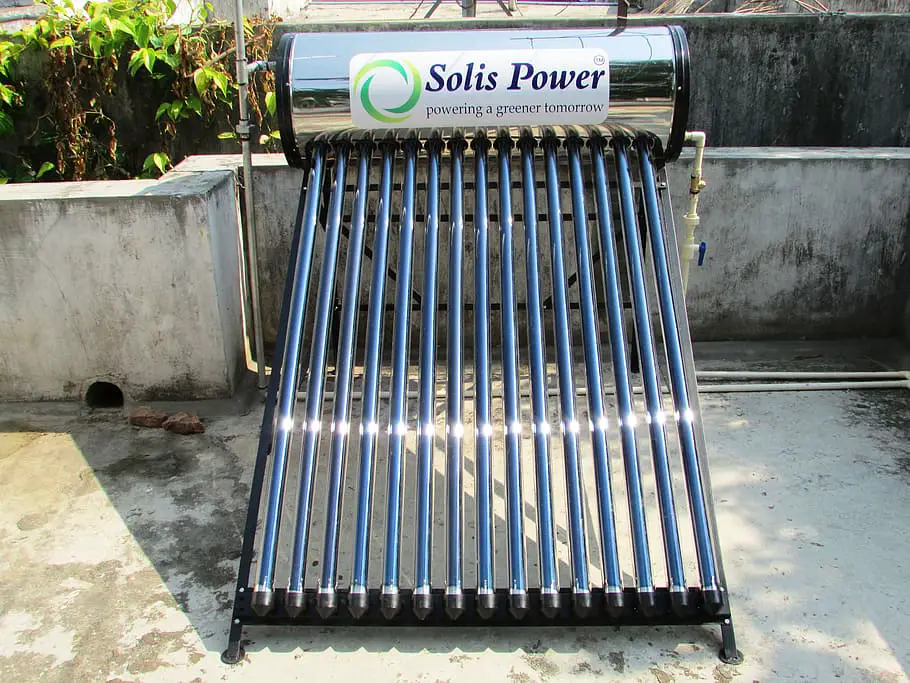
Imagine stepping into a warm shower, heated by nothing but the power of the sun.
It’s not only a fantastic way to save on your energy bills but also an exciting DIY project you can tackle over a weekend.
Building a solar-powered water heater might sound complicated, but it’s actually quite straightforward.
The main components are a solar collector (which absorbs the sunlight), a storage tank, and a circulation system to move the water between the two.
One of the simplest types of solar water heaters you can make is a solar batch heater, which integrates the collector and storage tank into one unit. Here’s how
You’ll need a few materials like a used water heater tank, some plumbing pipes, insulation, and paint.
The idea is to paint the tank black (to absorb more heat), enclose it in a DIY insulated box, and position it where it will get maximum sunlight.
Remember, safety is paramount when working on these projects, especially when dealing with electricity and hot water.
Always take appropriate precautions and consider seeking professional advice if you’re unsure about any step.
By tackling these DIY solar power projects, you’re not just building useful devices.
You’re also building your understanding of how solar energy works.
And who knows, you might just find a new hobby in the process! Happy crafting!
Impact of Solar Power on Electricity Bills

Ever fantasized about opening your electricity bill and not being greeted by a daunting number?
That’s the beauty of solar energy! In this part of our exploration into solar energy for home and business, we’ll delve into the real impact that solar power has on those pesky electricity bills.
We’ll talk about how much you can save, how quickly you’ll start seeing those savings, and why solar energy is a smart financial move for the long haul.
So, buckle up and get ready to see your energy bills in a brand new, sunlit perspective!
Immediate Impact on Electricity Costs
If you’ve been dreaming of a magical button that instantly reduces your electricity costs, solar power is about as close as it gets.
Once your solar power system is up and running, you’ll start seeing the impact on your electricity bills almost immediately.
A solar power system on your roof is like having a mini power plant that’s dedicated just to your home or business.
It generates electricity right where you use it.
So instead of buying all your power from the grid at retail prices, you can offset it with the free, renewable energy produced by your solar panels.
Depending on the size of your system and your energy consumption, you might generate enough power to offset your entire electricity bill.
That means you could see your bill shrink dramatically, and in some months, you might not even have a bill to pay!
Long-Term Financial Benefits
The immediate savings on your electricity bills are great, but they’re just the tip of the solar iceberg.
The real financial beauty of solar power lies in its long-term benefits.
Let’s talk about the lifespan of a solar power system. With proper maintenance, it can easily last for 25 to 30 years or even longer.
That’s a few decades of reduced or virtually non-existent electricity bills.
And it’s not just about the savings. Solar power also offers protection against rising energy costs.
Over the years, electricity prices tend to rise. But with a solar power system, you generate your own power, so you’re less impacted by these fluctuations.
Plus, depending on where you live, you may be eligible for solar incentives like tax credits, rebates, or feed-in tariffs, which can help pay off your initial investment faster and increase your overall savings.
In short, solar power is a fantastic way to save money on your electricity bills, both immediately and in the long term.
It’s like a sunny financial forecast that keeps going year after year!
Grants and Incentives for Solar Power Installation
We all love a good deal, right? What if I told you that going solar can not only save you money in the long run, but could also come with some upfront financial perks?
Yes, you heard it right! Across the globe, governments and utilities are offering a variety of grants and incentives to make solar power more affordable and attractive.
In this segment, we’re going to dive into the world of these incentives for solar power installation.
We’ll explore how they work, what types are available, and how you can take advantage of them.
Ready to see how the sun can shine on your bank account from day one? Let’s dive in!
Federal Solar Investment Tax Credits (ITC)
The Federal Solar Investment Tax Credit (ITC) is like a little present from the government to sweeten your solar investment.
It’s a dollar-for-dollar reduction in the federal income tax you owe, based on the cost of your solar power system.
So, how does it work? Let’s say you’ve installed a solar power system that costs $10,000.
With the ITC, you can claim a percentage of that cost as a credit when you file your taxes.
This isn’t a deduction that reduces your taxable income, it’s a credit that reduces your tax bill.
In other words, it’s like having a discount coupon for your solar power system that you can cash at tax time!
But keep in mind that the ITC won’t last forever. It’s currently set to phase out over the next few years, so if you’re thinking about going solar, now could be a great time to take advantage of this incentive.
State and Local Solar Incentives
While the federal ITC is a biggie, don’t forget to check out the incentives offered at the state and local levels.
These can vary widely depending on where you live, but they can make going solar even more affordable.
State and local incentives can take many forms. Some areas offer tax credits or rebates that directly reduce the cost of your solar power system.
Others have performance-based incentives, which pay you based on how much power your system generates.
And then there are solar renewable energy certificates (SRECs). In some states, utilities are required to generate a certain percentage of their power from renewable sources.
If they can’t meet their goals, they can buy SRECs from solar homeowners instead.
If you live in a state with an SREC program, you could earn money just for generating solar power!
In short, there’s a whole world of solar incentives out there that can help offset the cost of going solar.
Be sure to do your research or speak with a local solar professional to find out what incentives are available in your area.
Solar Power for Businesses: A Detailed Guide

Who said solar energy was just for homes? Let’s debunk that myth right now!
Businesses across the spectrum are increasingly turning to solar power, not just as a sustainable choice, but also as a savvy financial move.
Whether you’re running a small local store, a bustling restaurant, or a large industrial complex, solar power can be a game-changer.
This section is your go-to guide for everything related to ‘solar power for businesses.’
We’ll cover how businesses can benefit from solar power, the process of installing a commercial solar system, and more.
Ready to let the sun shine on your business? Let’s get started!
Analyzing the Business Case for Solar Power
Many businesses are exploring solar power not just for its environmental benefits, but also for its financial appeal.
If you’re considering solar energy for your business, it’s important to thoroughly analyze the business case.
First and foremost, there are the potential cost savings. Commercial electricity rates can be quite high, and going solar can help reduce or even eliminate your electricity bills.
A solar power system can produce free, renewable electricity for your business for decades, which can result in substantial long-term savings.
But it’s not just about the savings. Solar power can also serve as a hedge against rising electricity costs.
As a business, managing, and forecasting costs are essential, and solar power provides a way to lock in your electricity costs for years to come.
And let’s not forget about the marketing benefits. Customers and clients are increasingly looking to do business with companies that are environmentally responsible.
By going solar, you can showcase your commitment to sustainability and potentially attract more business.
However, like any significant investment, going solar also involves costs, primarily the upfront cost of the solar power system and its installation.
But with the available tax credits and incentives, the decreasing costs of solar equipment, and the potential energy savings, many businesses find that solar power is a worthwhile investment.
Steps to Transition a Business to Solar Power
Transitioning a business to solar power is a multi-step process, but with the right approach and the right partners, it can be a smooth journey.
Evaluation and Planning: The first step is to evaluate your business’s energy needs and goals.
How much electricity does your business use? How much roof space do you have available? What’s your budget for going solar?
Choosing a Solar Contractor: Once you have a clear idea of your needs and goals, the next step is to choose a solar contractor.
You’ll want to look for a contractor with experience in commercial solar installations and a solid track record.
Design and Installation: After choosing a contractor, the design and installation process can begin.
The contractor will design a solar power system that meets your energy needs and fits within your budget.
They’ll handle the installation process and coordinate all necessary inspections and permits.
Operation and Maintenance: After your solar power system is installed, it will need to be regularly maintained to ensure it operates efficiently.
This can involve regular cleaning, system monitoring, and occasional repairs.
In short, transitioning a business to solar power involves careful planning and decision-making.
But with the potential environmental and financial benefits, it can be a smart move for many businesses.
Solar Power Systems for Schools and Colleges

Who said learning can’t be enlightening and green at the same time? Welcome to the world of solar-powered schools and colleges!
Educational institutions worldwide are embracing the sun’s power to not only reduce their carbon footprint but also save on energy costs, and in turn, channel those funds towards better educational resources.
Moreover, solar installations serve as real-time, real-life laboratories for students to learn about renewable energy.
This section will light up your knowledge about ‘solar power systems for schools and colleges’.
We’ll cover why solar power is a great choice for educational institutions, how they can implement it, and some shining examples.
Ready to get schooled on solar? Let’s turn the page!
Benefits of Solar Power for Educational Institutions
Let’s chalk out why solar power makes so much sense for educational institutions.
It goes beyond just ‘being green’ (although that is indeed a significant perk!).
Energy Cost Savings: Educational institutions, whether a primary school or a university, consume a lot of power.
From computers and lab equipment to heating and cooling systems, the energy needs are substantial.
By transitioning to solar power, schools and colleges can dramatically reduce their electricity costs.
Educational Opportunities: Having a solar power system on campus can serve as a living laboratory for students.
It provides hands-on learning opportunities for students studying science, technology, engineering, and math (STEM) subjects.
And it can help all students understand the importance of renewable energy and sustainability.
Leadership in Sustainability: By adopting solar power, schools and colleges can demonstrate their commitment to sustainability.
This can enhance their reputation among prospective students, parents, and the broader community.
Long-Term Financial Planning: Solar power allows schools and colleges to lock in their electricity costs for years into the future.
This makes financial planning easier and can free up funds for other educational needs.
Case Studies of Schools and Colleges Using Solar Power
You’ll be surprised how many educational institutions are already harnessing the power of the sun! Let’s look at a couple of examples.
The Butte College, California: Butte College made headlines as the first U.S. college to become ‘grid positive,’ meaning it generates more electricity from its solar arrays than it uses.
The college’s solar power system has reduced its utility costs by millions of dollars and has helped it become a leader in sustainability.
The Green School, Bali: The Green School in Bali, Indonesia, is an example of how solar power can be integrated into a school’s curriculum and values.
The school is powered entirely by renewable energy, much of it from a solar array in the shape of a bamboo ‘solar vortex.’
The school uses its solar power system as a teaching tool to educate students about renewable energy.
These are just two examples of how schools and colleges are using solar power to save money, educate their students, and lead in sustainability.
With the declining costs of solar power and the increasing awareness of the importance of renewable energy, it’s likely that many more educational institutions will follow in their footsteps.
Challenges and Solutions in Adopting Solar Power
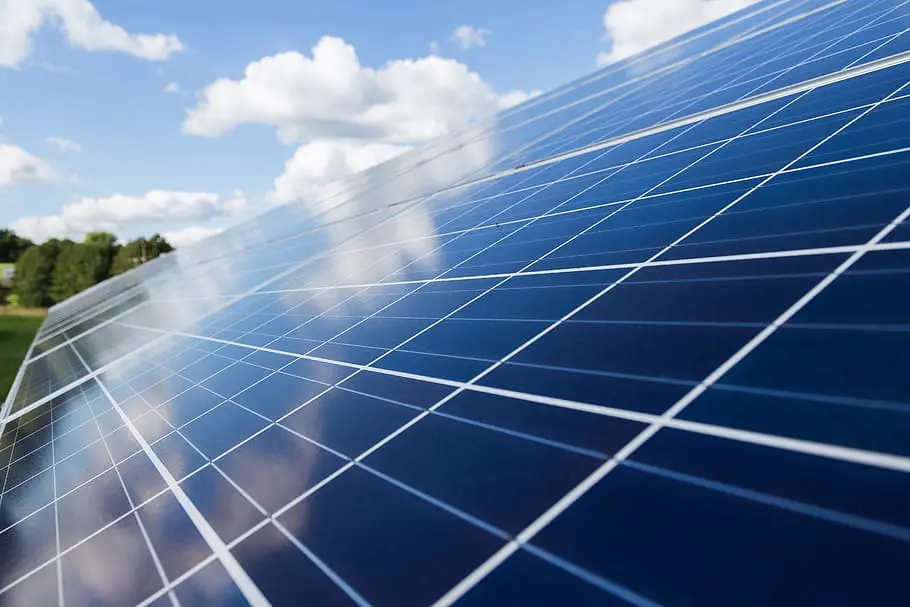
Solar power, despite being a beacon of hope for a sustainable future, isn’t without its share of challenges.
But just like a cloud doesn’t diminish the sun’s power, these challenges haven’t quelled the determination to harness solar energy.
From upfront installation costs to variability in sunlight, each problem has sparked ingenious solutions, driving us closer to the widespread adoption of solar power.
In this section titled challenges and solutions in adopting solar power, we’ll navigate through these hurdles and shine a light on how innovators are addressing them.
So, let’s roll up our sleeves and take a closer look, shall we?
Overcoming Initial Installation Costs
One of the more daunting aspects of solar power adoption is the upfront installation costs.
Buying and installing solar panels can be a significant investment, one that might deter homeowners and businesses.
Financing and Leasing Options: Many solar installation companies now offer financing options to spread the cost of installation over several years, making solar power more affordable.
Leasing is another option, where you can rent the solar power system and pay a monthly fee, often less than your current electricity bill.
Government Incentives: Various government programs help reduce the cost of solar installations.
These may include tax credits, rebates, and grants. One of the most well-known in the U.S. is the federal solar tax credit, which allows homeowners and businesses to deduct a portion of their solar installation costs from their federal taxes.
Decreasing Costs of Solar Panels: Over time, the cost of solar panels has been dropping, making it an increasingly affordable option.
This is due to advancements in technology and increases in manufacturing scale and efficiency.
Addressing Variable Sunlight Issues
Solar power relies on sunlight, and not every day is sunny, right?
This variability in sunlight due to weather, season, and time of day presents a challenge for solar power generation. But there are solutions.
Battery Storage: By storing excess energy produced during sunny periods, solar batteries allow for the use of solar power even when the sun isn’t shining.
This significantly enhances the effectiveness of solar power systems, making them a more reliable source of energy.
Grid Connection: Most solar power systems for homes and businesses are connected to the grid.
When the system generates more power than is used, the excess is sent back to the grid.
Conversely, when the system isn’t producing enough power, the grid supplies the needed electricity.
Hybrid Systems: Solar power can be combined with other renewable energy sources like wind or geothermal to create a hybrid system.
This can help overcome the issue of variable sunlight and provide a more constant energy supply.
Advanced Forecasting: New technologies and algorithms are being developed to predict sunlight and weather patterns more accurately.
This can help manage power output from solar panels more effectively and improve the integration of solar power into the electricity grid.
Remember, every challenge is an opportunity for innovation.
These obstacles have catalyzed the solar industry’s growth, and with every solution, we take a step closer to a more sustainable future powered by the sun.
Case Studies of
Successful Solar Power Installations
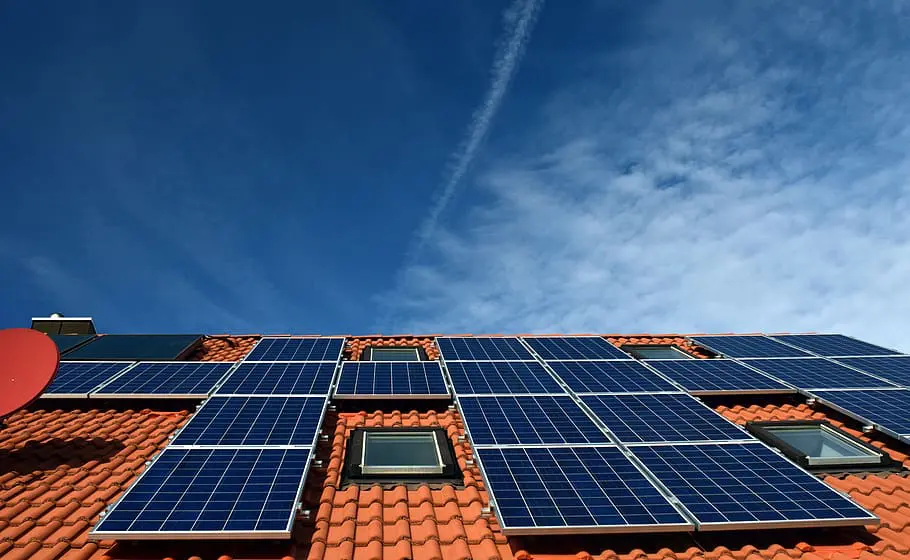
As the saying goes, ‘Seeing is believing’. And what better way to believe in the transformative power of solar energy than witnessing its success firsthand?
In this segment, titled ‘Case Studies of Successful Solar Power Installations’, we’ll take you on a tour of homes, businesses, and communities across the globe that have embraced solar energy.
These shining examples of successful solar installations have not only reaped benefits for themselves but have also contributed to a healthier, more sustainable planet.
So grab a cup of tea, sit back, and get ready to be inspired by these sun-soaked stories!
Residential Solar Power Success Stories
Saving and Earning Through Solar: Meet John and Sarah from California.
After installing a rooftop solar power system in their home, they’ve seen a significant drop in their electricity bills.
They also earn credits by feeding excess power back into the grid through net metering. It’s a win-win!
Sustainability Heroes: Let’s fly across the globe to Australia and visit the Smith family.
By switching to solar power, they’ve drastically reduced their carbon footprint, making a strong contribution to the fight against climate change.
Plus, they enjoy the independence that comes with generating their own power.
Off-Grid Solar Success: In the remote hills of Montana, a cabin owned by the Robinsons is entirely off the grid.
With solar panels and a battery storage system, they live comfortably, proving that you can enjoy modern conveniences while being completely energy self-sufficient.
Commercial Solar Power Success Stories
Going Green and Saving Green: Our first stop is a small business in Germany that decided to go solar.
The switch not only helped reduce its operational costs but also boosted its reputation as a green business.
Clients appreciate their commitment to sustainability, proving that solar power can be beneficial for both the environment and the bottom line.
Solar-Powered Schools: In Spain, a local school installed solar panels on its rooftop. This provides enough electricity to power the entire school.
Besides reducing electricity bills, it serves as a valuable educational tool, teaching students about renewable energy and environmental stewardship.
Solar Farms and Utility Companies: Finally, we’ll take a look at a large utility company in Texas that embraced solar power on a grand scale.
They built a solar farm capable of producing hundreds of megawatts of power, significantly reducing their reliance on fossil fuels.
This transition represents a major step towards a more sustainable and resilient power grid.
These stories are just the tip of the iceberg when it comes to the potential of solar power.
They provide a glimpse into a future where homes and businesses generate their own clean, green energy right where they need it.
And guess what? This future is already here!
Solar Power vs Traditional Energy Sources

Imagine a boxing ring where, in one corner, we have Solar Power, the promising contender, known for its clean, renewable energy.
In the opposite corner, we find Traditional Energy Sources, the reigning heavyweight, built on established, yet environmentally taxing methods.
In this section, titled ‘Solar Power vs Traditional Energy Sources’, we’ll witness a match like no other, comparing these two titans on various fronts.
Will Solar Power land the knockout punch? Join us as we delve into this energy showdown.
Spoiler alert: The outcome might just surprise you!
Comparison of Costs
Upfront Costs: Right off the bat, we have to admit that Solar Power tends to take an early hit in the cost department, especially when considering the initial investment for installing a solar power system.
Traditional Energy Sources, with their established infrastructure, often don’t require such an upfront cost.
Long-term Savings: But don’t count Solar Power out just yet! While the initial costs can be high, solar systems are actually cost-effective in the long run.
You’ll see considerable savings on your electricity bills, and with the lifespan of solar panels extending over 25 years, the savings truly add up.
In contrast, Traditional Energy Sources can be subject to price fluctuations and generally don’t offer the same long-term savings.
Environmental Impact Analysis
Carbon Footprint: Now onto the environmental round, and here’s where Solar Power truly shines.
Solar power systems produce energy without any harmful emissions, leading to a significantly lower carbon footprint compared to
Traditional Energy Sources, such as coal and gas, contribute to greenhouse gas emissions and climate change.
Renewability: It’s also important to note that Solar Power taps into an unlimited, renewable energy source: the sun.
Traditional Energy Sources, on the other hand, rely on finite resources, which involve destructive extraction processes and can lead to devastating environmental consequences, like oil spills and habitat destruction.
While the battle between Solar Power and Traditional Energy Sources continues, one thing is certain: shifting towards renewable energy options like solar power is beneficial both economically and environmentally.
It’s a solid investment in our future and the health of our planet.
Portable Solar Power Solutions for Camping
What if I told you that you could harness the power of the sun even while exploring the great outdoors? That’s right!
In this section, titled ‘Portable Solar Power Solutions for Camping’, we’ll explore how you can keep your devices charged and enjoy modern conveniences, all while nestled deep in nature’s bosom.
With the sun as your companion, get ready to bring your camping trips to new heights of comfort and sustainability.
So grab your backpack and tent, as we venture into the world of portable solar power solutions for camping!
Solar Power Packs for Camping
Stay Charged: Camping is a fantastic way to escape from the hustle and bustle of daily life. But, let’s face it, it’s hard to part with our beloved devices.
Solar power packs offer a convenient solution to keep your smartphones, tablets, and even laptops charged up while you’re outdoors, without the guilt of using non-renewable energy.
Variety of Options: Solar power packs come in a variety of sizes and capacities to cater to different needs.
Some are compact and lightweight, perfect for backpacking trips, while others are larger and more powerful, suitable for longer stays or powering bigger devices.
Solar-Powered Camping Gadgets
Light up Your Nights: Imagine a cozy campfire night under the stars, but with a solar-powered lamp or lantern providing additional light.
Perfect for those late-night reading sessions in your tent or illuminating your campsite, these gadgets are a great addition to your camping kit.
Cooking and Heating: Who said you can’t enjoy a hot meal while camping?
Solar-powered stoves and ovens are now available and incredibly effective.
Utilizing the sun’s power, they can cook meals and heat water without the need for a traditional fire, making your camping trip more comfortable and eco-friendly.
Camping doesn’t mean you have to compromise on convenience or your commitment to sustainability.
With these solar power solutions, you can embrace the power of the sun, even while venturing into the wilderness.
It’s all about blending the best of both worlds – enjoying nature’s beauty and making good use of her resources in a sustainable manner!
Solar Power Solutions for Off-Grid Living
Imagine a lifestyle free from utility bills, power outages, and reliance on the traditional grid system.
Welcome to the realm of off-grid living! But how do we power our homes, you ask? Step in solar energy!
In this section, ‘Solar Power Solutions for Off-Grid Living‘, we’ll delve into how harnessing the sun’s energy makes living off-grid not just possible, but absolutely rewarding.
From sustainable energy independence to reducing carbon footprint, let’s explore the boundless opportunities of off-grid living powered by solar energy.
So, are you ready for this life-changing journey? Let’s go off the beaten track together!
Off-Grid Solar System Setup
Power Where You Need It: Living off-grid can be a rewarding experience, but it also poses its unique set of challenges, one of which is power supply.
An off-grid solar system setup can effectively solve this problem. The system, typically composed of solar panels, a battery bank, a charge controller, and an inverter, generates electricity from sunlight and stores it for use around the clock.
Tailored to Your Needs: The beauty of an off-grid solar system is that it can be customized to meet your specific energy needs.
Whether you live in a tiny home or a larger residence, there’s a solar setup that can be designed to power your off-grid life, from your essential appliances to your comfort gadgets.
Maintenance of Off-Grid Solar Systems
Regular Checks: Like any other system, maintaining your off-grid solar system is key to ensuring its longevity and performance.
Regular checks, including inspecting the panels for dirt or damage, verifying the battery voltage, and assessing the overall system performance, are a part of responsible off-grid living.
Professional Support: While daily upkeep and simple troubleshooting can be done individually, having a professional carry out periodic in-depth maintenance is advisable.
They can ensure that your system is running optimally, and any potential issues are identified and resolved early.
Embracing off-grid living doesn’t mean letting go of the conveniences modern power offers.
With solar energy, you can carve your path, live sustainably, and enjoy the freedom that comes with energy independence.
Now, isn’t that a shining way to live?
The Future of Solar Power Technology

The sun has been around for about 4.6 billion years, but we’ve only just begun to tap into its immense power potential.
As we move forward, the horizon of solar power technology continues to expand, bringing with it promises of a brighter, more sustainable future.
In our final section, The Future of Solar Power Technology, we’ll explore how the advancements in solar technology are set to revolutionize how we harness and utilize solar energy, in homes and businesses alike.
From the latest in photovoltaic technology to revolutionary storage solutions, let’s step into the future of solar power together.
There’s a whole universe of innovation out there, just waiting to light up our world!
Upcoming Advancements in Solar Technology
A Brighter Tomorrow: The future of solar technology holds incredible promise.
Researchers are constantly on the lookout for new ways to enhance the efficiency and cost-effectiveness of solar power.
From innovations in solar panel designs and materials, like perovskite solar cells, to the integration of solar technology with artificial intelligence for optimized performance, we’re on the cusp of a solar revolution.
Storage Solutions: One key area of focus is solar power storage. Technologies like solid-state batteries, flow batteries, and even the concept of solar fuels (creating fuels using sunlight) are under development.
These advancements aim to overcome one of the key challenges in solar power adoption the intermittent energy supply due to varying sunlight availability.
Potential Impact of Future Solar Innovations
Widespread Adoption: The impact of these upcoming solar innovations will be profound.
As solar power becomes more efficient and affordable, it’s anticipated to become a primary source of energy worldwide.
This means more homes and businesses powered by clean, renewable energy and a significant reduction in reliance on fossil fuels.
Environmental and Economic Benefits: Future solar technology can lead to massive reductions in greenhouse gas emissions, playing a critical role in mitigating climate change.
Economically, the rise of solar power will open up new job opportunities in the renewable energy sector, creating a greener and more sustainable economy.
The future of solar power technology is, without a doubt, bright and full of potential.
As we continue to innovate and enhance this renewable energy source, we move one step closer to a more sustainable, energy-independent world.
Are you excited about this bright future? We certainly are!
Conclusion: Solar Energy for Home and Business

As we draw our journey to a close, it’s clear that solar energy for home and business isn’t just an option anymore; it’s an essential step toward a sustainable future.
Our exploration has taken us from the benefits and challenges to the exciting prospects that lie ahead in the world of solar power.
Hopefully, this comprehensive guide has shed light on the incredible potential of solar power, inspiring you to join the solar revolution.
So, whether you’re a homeowner, a business owner, or simply a curious reader, remember, the power of the sun is in your hands.
Together, we can illuminate a path to a greener, cleaner, and brighter world.
Let’s harness the sun and power our lives, homes, and businesses sustainably!
Recap of the Benefits and Applications of Solar Power
A Journey Worth Remembering: If there’s one thing we’ve learned throughout this comprehensive exploration, it’s the incredible versatility and value of solar energy for homes and businesses.
From slashing electricity bills to increasing property value, reducing our carbon footprint to promoting energy independence, the benefits of solar power are as diverse as they are remarkable.
Applications Galore: And it doesn’t stop at powering homes and businesses!
We’ve discovered solar’s role in off-grid living, seen how it can light up our camping trips, and even learned about exciting DIY projects. Indeed, the applications of solar energy are limited only by our imagination.
Encouraging the Adoption of Solar Energy for Sustainability and Cost-Effectiveness
Sustainability Starts With Us: In a world increasingly aware of its environmental responsibilities, adopting solar power isn’t just a wise choice; it’s a necessity.
By embracing this renewable energy source, we contribute to the global fight against climate change and promote a more sustainable, eco-friendly way of life.
An Investment for the Future: Let’s not forget the cost-effectiveness of solar power!
While the initial installation costs may seem high, the long-term savings and protection against rising energy costs make solar power a smart investment.
It’s a win-win situation for both our wallets and the environment.
As we wrap up, we hope you’ve found this exploration of solar power both informative and inspiring.
May it ignite a spark within you to make the leap towards solar, harnessing the sun’s energy for a brighter, cleaner, and more sustainable future.
Remember, every solar panel installed is a beacon of hope for our planet. Let’s make the change today!

